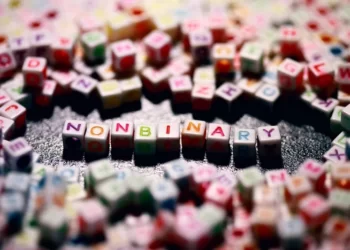Table of Contents
- What is Symbolic Interactionism?
- The Nature of Symbols
- The Role of Symbols in Social Interaction
- The Process of Meaning-Making
- Symbols and Power Relations
- The Fluidity of Symbols
- Conclusion
Symbolic Interactionism is one of the major theoretical frameworks in sociology that focuses on the way individuals interact with one another and how they create, interpret, and maintain meaning through symbols. Central to this theory is the concept of the “symbol,” which plays a crucial role in understanding human behavior and social interaction. In this article, we will explore what symbols are, their significance in social interaction, and how they are used in everyday life to create and interpret meaning.
What is Symbolic Interactionism?
Symbolic Interactionism is a sociological perspective that examines how individuals use symbols to communicate and create social reality. Founded by sociologists like George Herbert Mead and Charles Horton Cooley, the theory focuses on micro-level interactions between individuals, emphasizing the importance of symbols in these exchanges. Unlike other sociological perspectives that focus on larger structures, Symbolic Interactionism looks at how individual actions shape social structures through meaning-making processes.
This theoretical framework suggests that individuals act based on the meanings they ascribe to objects, people, and situations. These meanings, in turn, are constructed and modified through social interactions. Symbols—such as language, gestures, and objects—are central to this process, as they provide the medium through which individuals understand and interpret the social world.
The Nature of Symbols
A symbol, in the context of Symbolic Interactionism, is anything that carries meaning beyond its literal form. It could be a word, gesture, object, or even a social role. Symbols are not inherently meaningful; rather, their meanings are socially constructed and learned through interaction. For example, a handshake is not just a physical act but a symbol of greeting, agreement, or friendship in many cultures.
Symbols have three key characteristics:
- Arbitrariness: Symbols are arbitrary, meaning there is no inherent connection between the symbol and what it represents. For instance, the word “tree” has no natural connection to the object it describes, yet we all understand its meaning because we have been socialized into the language.
- Shared Understanding: For symbols to function effectively, there must be a shared understanding among individuals. The meaning of a symbol is not determined by one person but by the collective group. This is why cultural context is important when interpreting symbols, as what might be a positive gesture in one culture could be offensive in another.
- Dynamic Nature: The meaning of symbols can change over time as social norms and contexts shift. For example, the rainbow symbol has historically held various meanings—from a biblical reference to Noah’s Ark to its modern association with LGBTQ+ pride.
The Role of Symbols in Social Interaction
Symbols are essential for human communication and interaction. They allow individuals to convey complex ideas, emotions, and intentions in a way that is understood by others. Language, for instance, is a system of symbols that allows people to communicate abstract concepts like love, justice, and freedom. Without symbols, human interaction would be limited to immediate, tangible experiences.
Symbols and Identity
One of the most important ways symbols function in social interaction is through the construction of identity. Individuals use symbols to express who they are and how they relate to the world around them. Clothing, for instance, is not just a practical necessity but a symbol of identity. The clothes one wears can signal their profession, social status, or even personal beliefs. For example, a doctor’s white coat symbolizes medical authority, while a business suit might symbolize professionalism.
Symbols and Social Roles
Social roles themselves are symbolic. When a person occupies a certain role—such as a parent, teacher, or police officer—they are expected to behave in accordance with the symbolic expectations tied to that role. These roles are recognized and understood by others in society, allowing for predictable patterns of interaction. A police uniform, for example, symbolizes law enforcement, and people adjust their behavior accordingly when they see someone wearing it.
Symbols and Social Norms
Symbols also help to enforce social norms. A stop sign, for instance, is a symbol that communicates the social rule of stopping at an intersection. The red color, octagonal shape, and word “STOP” combine to create a symbol that tells drivers how to behave. Breaking this norm—by running a stop sign—results in social consequences, such as a fine or disapproval from others.







